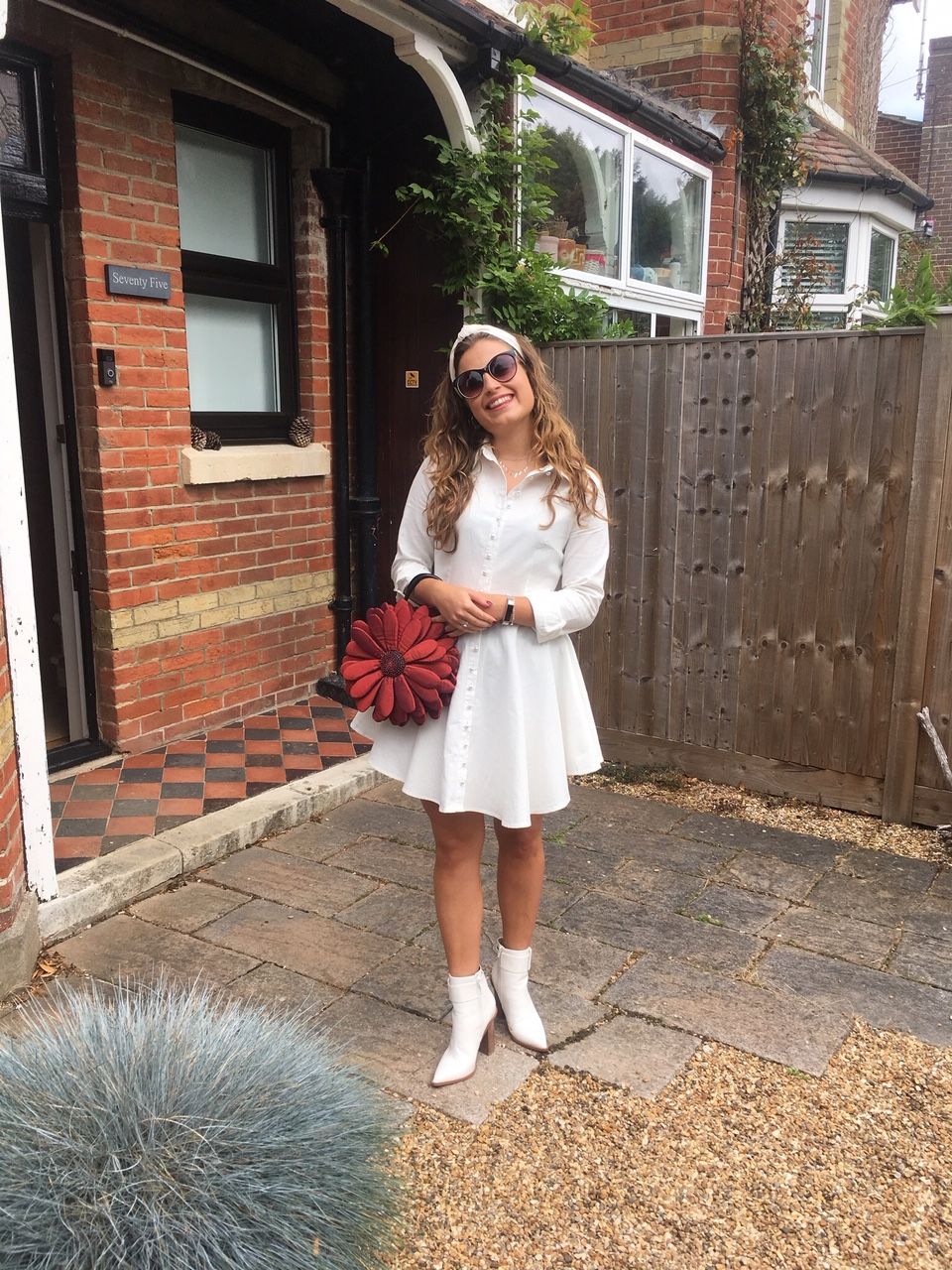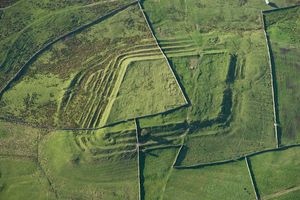On 15 July 2019, Hampshire County Council announced the first Hampshire Day. The day is an annual opportunity for people across the county to share in celebrating Hampshire’s rich history, culture and traditions. The date was chosen as it is the feast day of St Swithun – the patron saint of Winchester Cathedral, a prominent feature in the county.
Here at Hampshire Cultural Trust we thought we’d mark the first anniversary of this day by putting together a small selection of some of our favourite objects from around the county and in the collections we care for.
Strawberry Cart
Where: Westbury Manor Museum, West Street, Fareham PO16 0JJ.
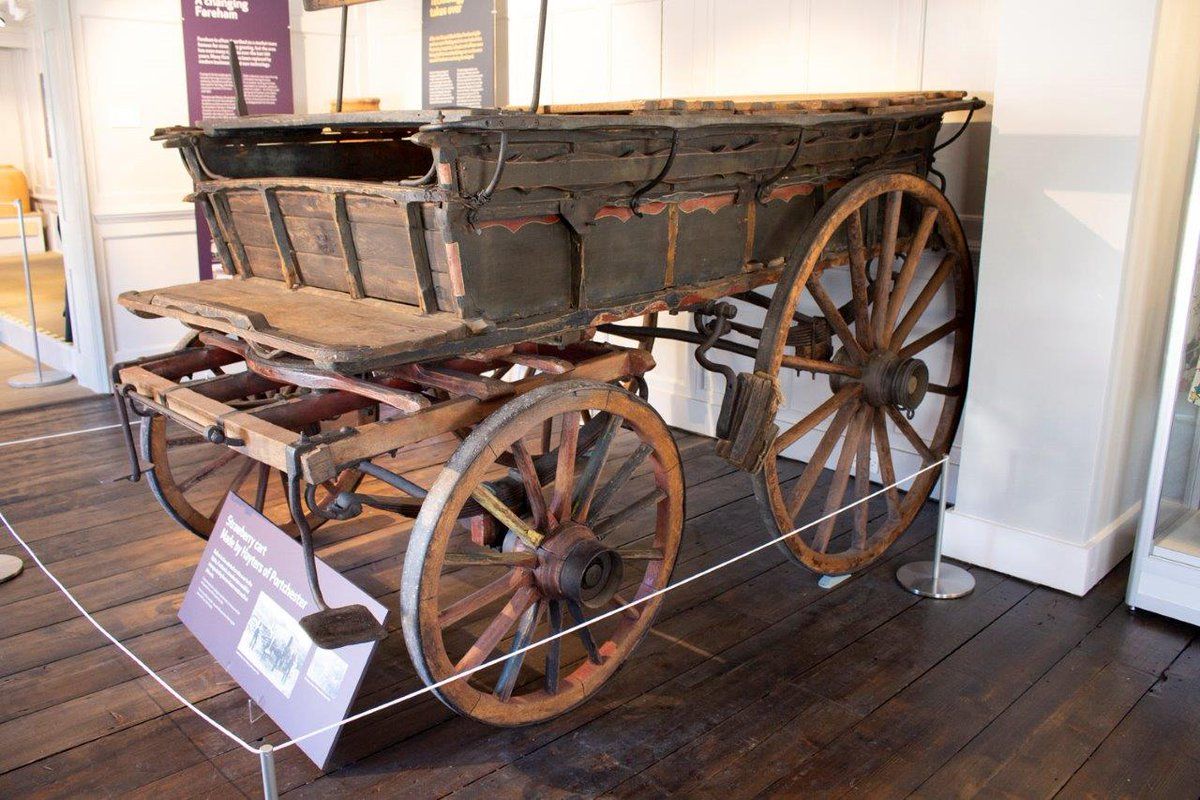
It is not known exactly when strawberries first became extensively grown in the Fareham area. They did however gain importance in the 1860s after the common land was enclosed and divided up. Strawberries were intensively grown in Titchfield, Locks Heath, Park Gate, Swanwick and Warsash. During the picking time every available person helped, including schoolchildren who had picking holidays. It was essential that the grower picked and sold as many strawberries as possible, because they relied on the income for the whole year.
Before lorries started to take over in the 1920s, Fareham’s strawberries would be transported by horse-drawn carts to the railway for further sale and distribution. Carts, such as this one, was made locally by Hayter's of Porchester and some of the original paintwork can still be seen today if you look closely.
The Tudor ceiling
Where: Westgate Museum, High Street, Winchester, SO23 9AP.
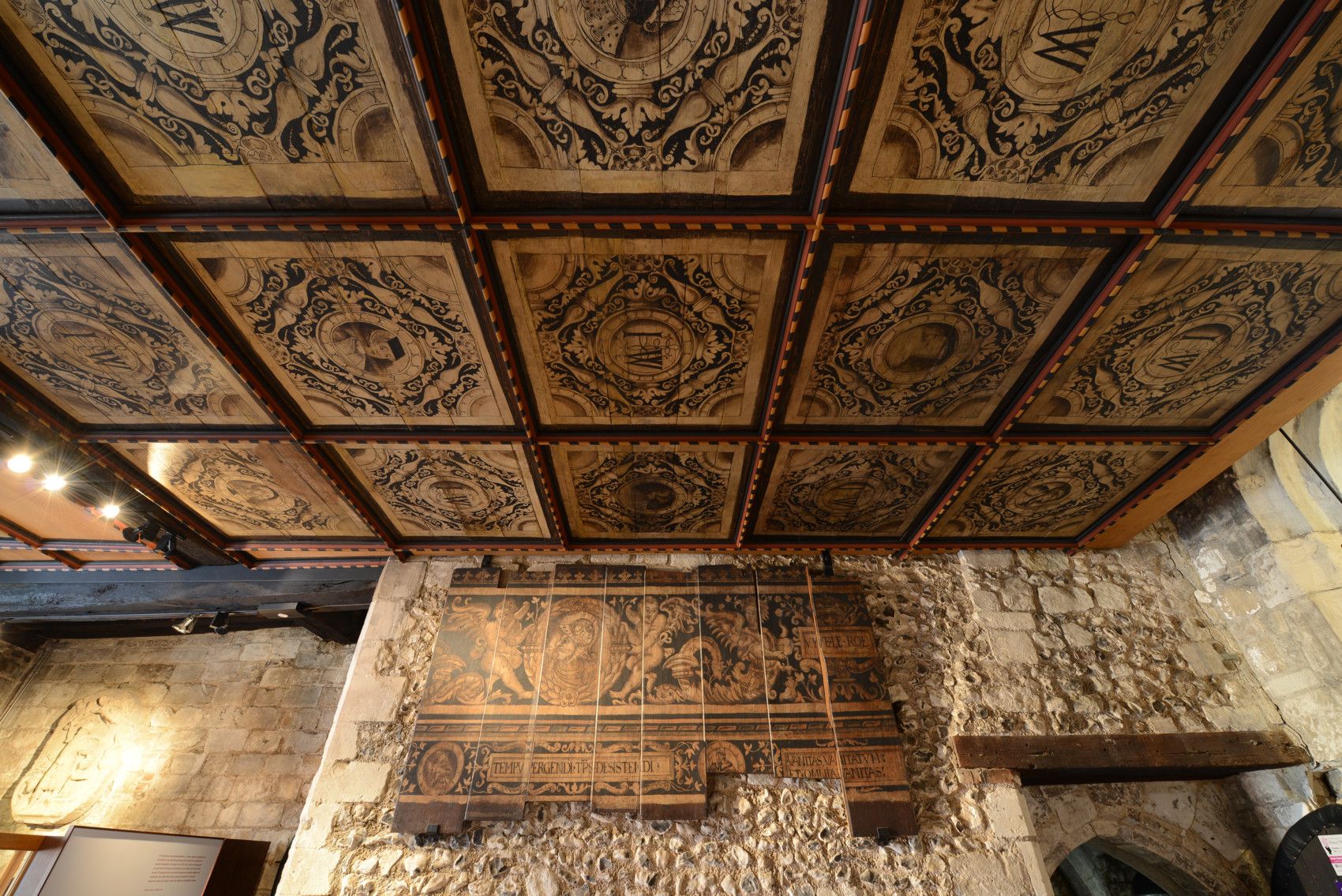
The medieval Westgate at the top of Winchester’s high street is one of two old gateways into the city which have survived into the 21st century. One of its most distinctive features is a decorated 16th century wooden ceiling, with two sections of a frieze below it.
It was thought that the painted decoration was commissioned by John White, who was the Warden between 1541 and 1554. It is believed that it was commissioned to honor the wedding of Mary I and Philip of Spain, which took place in Winchester in the summer of 1554.
The ceiling and frieze were found in Winchester College in 1885, having been used as a wall partition for many years. After an exhibition at the Society of Antiquaries in 1886, the ceiling and frieze were stored in the college until 1915, where they were loaned to the Victoria and Albert Museum until 1946. In the 1970s discussions with Winchester City Museums led to an agreement that the boards should be reassembled in the Westgate, which was of a suitable size to take the ceiling panels. This is where the objects remain today.
Alton Buckle
Where: Curtis Museum, High Street, Alton GU34 1BA.
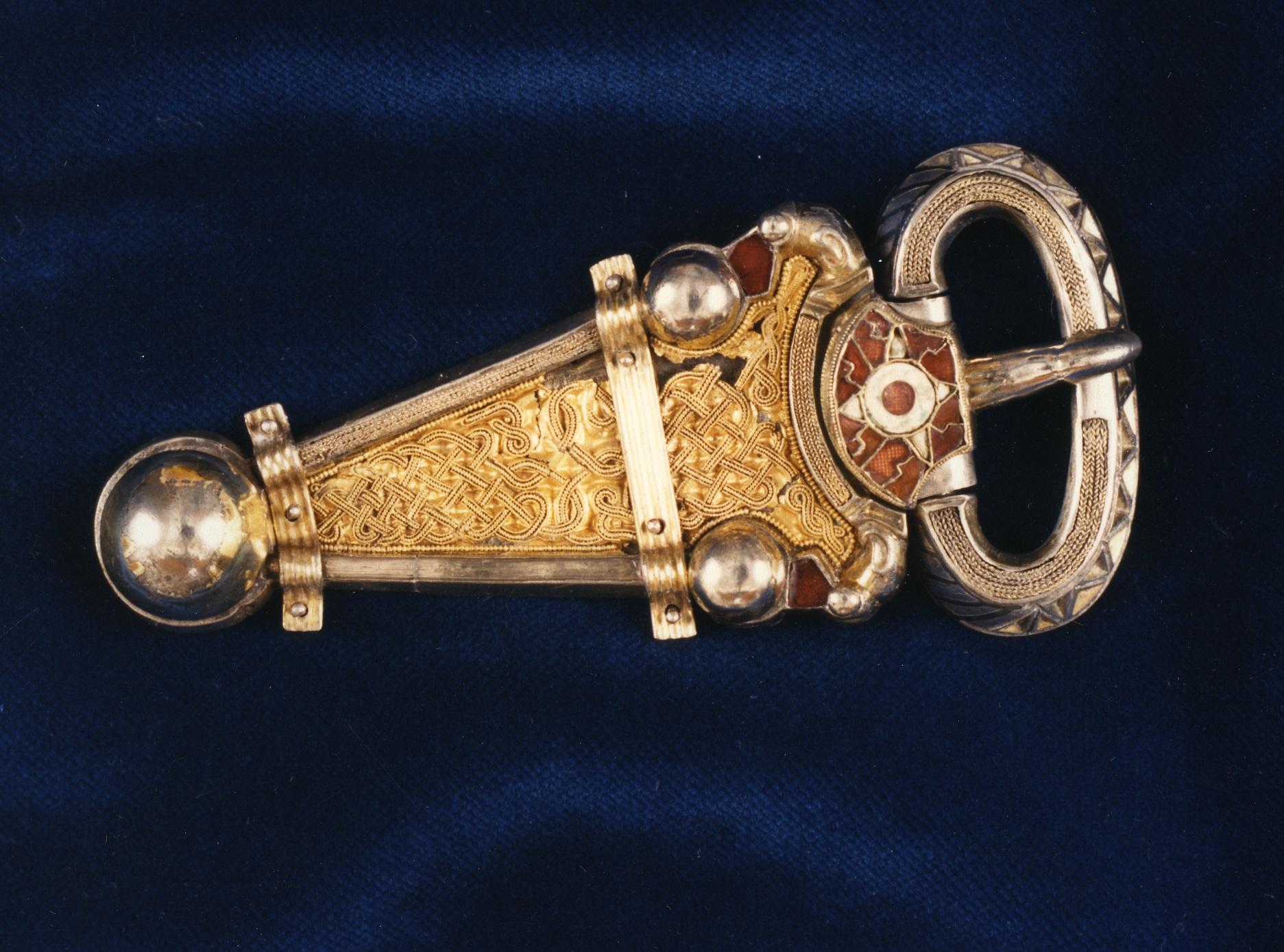
The Alton Buckle was found in Grave 16 of the Mount Pleasant Anglo-Saxon cemetery during excavations in 1959-61. It was discovered in the grave of an Anglo-Saxon warrior, accompanied by a sword, shield boss, spear heads and numerous smaller items. It is the finest piece of Anglo-Saxon craftsmanship to have been found in Hampshire and is among the most accomplished Anglo-Saxon pieces to have been found outside the famous Sutton Hoo burial in Suffolk.
The buckle features a silver gilt body with sub-triangular shape set with cloisionne garnets and glass. It shows signs of considerable use and wear, the two silver gilt bars being ancient repairs. Buckles like this were worn by men and used to fasten a belt worn around the waist or hips during the 6th and 7th centuries.
Jane Austen statue
Where: Willis Museum and Sainsbury Gallery, Market Place, Basingstoke, RG21 7QD.
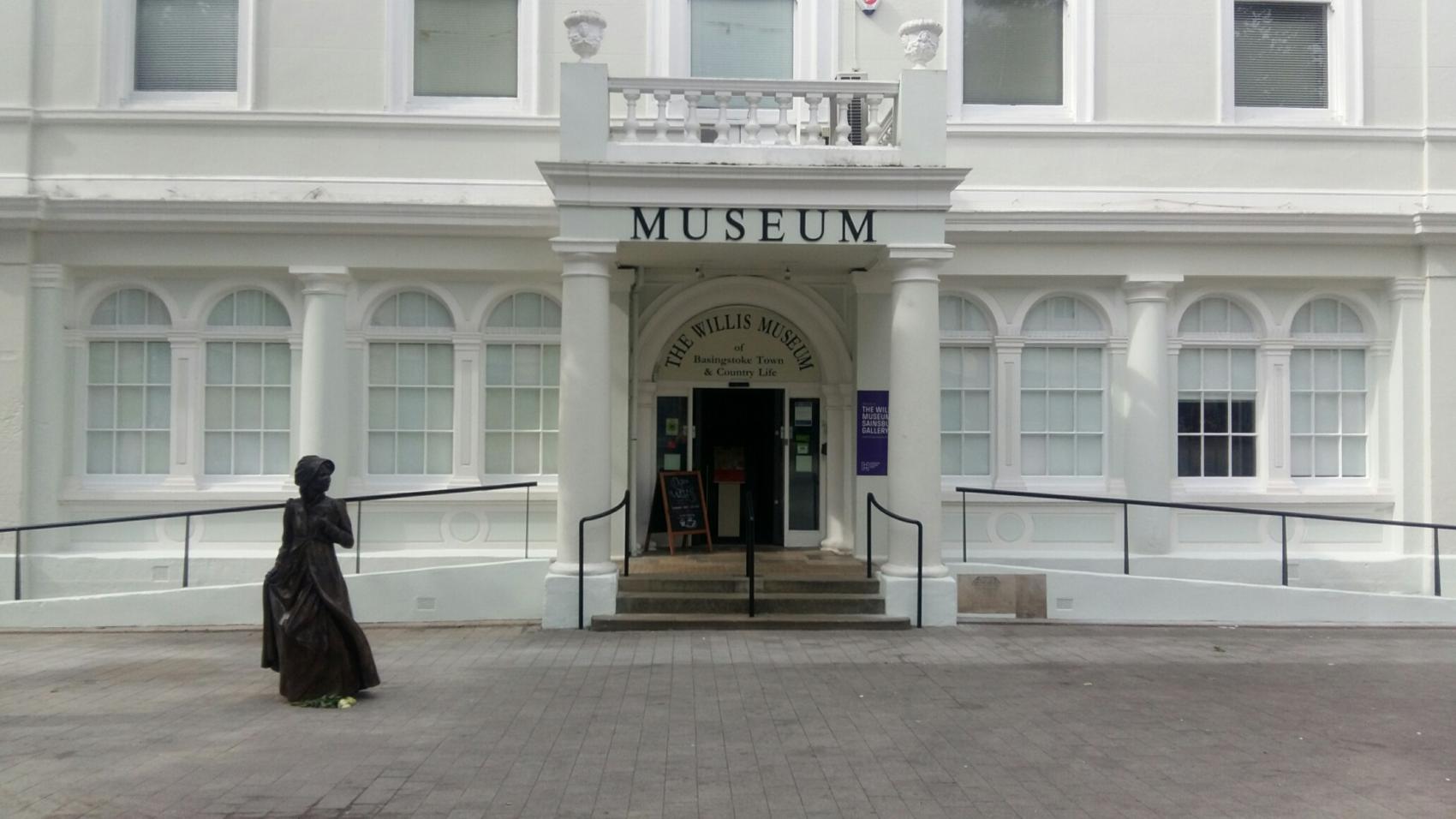
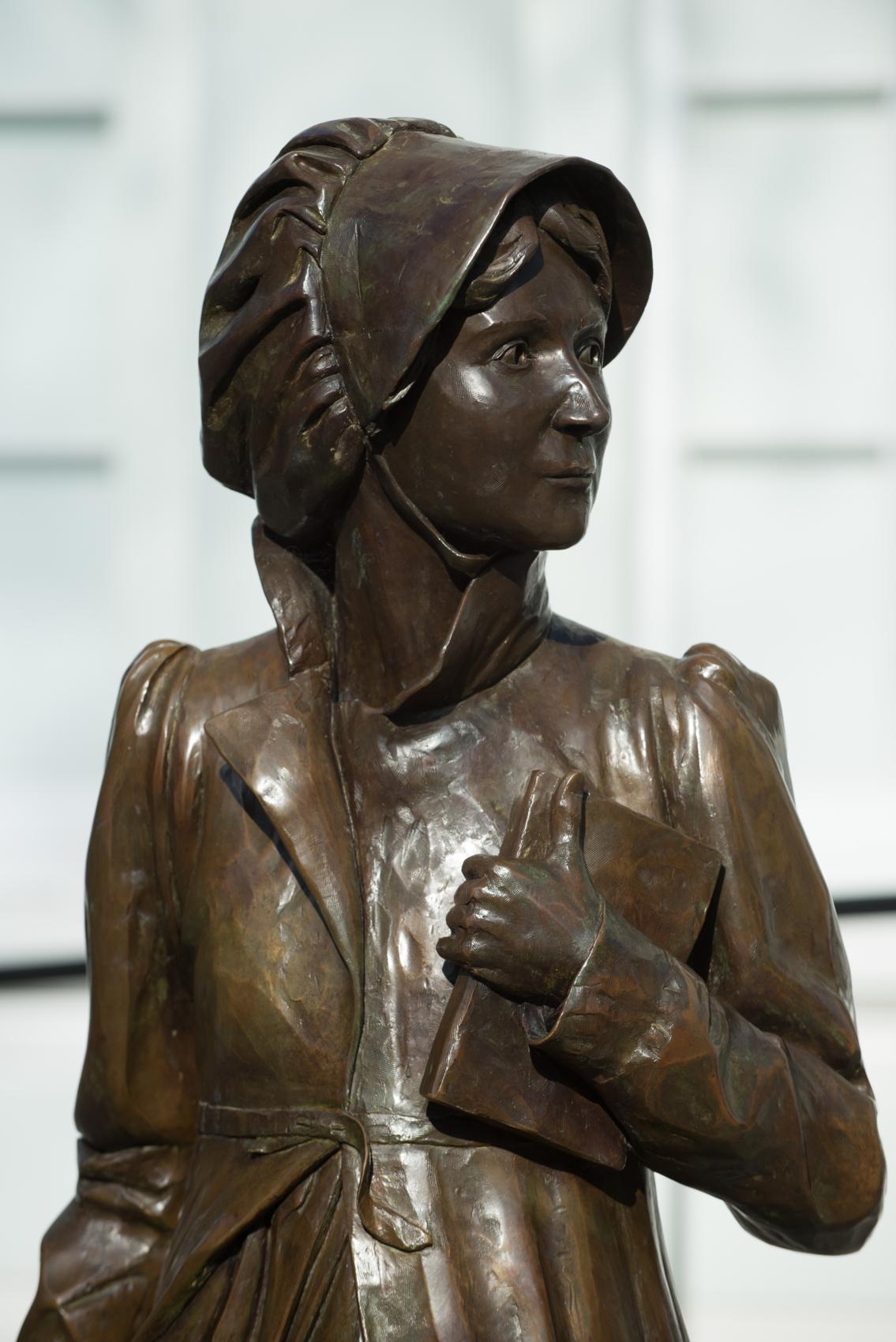
The Austen family lived in Steventon until they moved to Bath in 1801. Austen knew Basingstoke well and attended social gatherings at the Assembly Rooms in Market Place and regularly visited family friends at The Vyne, Oakley Hall and Ashe House.
The Jane Austen statue was unveiled in July 2017 to commemorate the 200th anniversary of her death. The statue was designed by Hampshire-based sculptor Adam Roud and cast at the Morris Singer Foundry in Lasham. The statue stands outside the Willis Museum and sees Jane holding a book and in motion in the town centre as she would have been in the 18th and 19th century.
Taskers Little Giant
Where: Milestones Museum, Leisure Park, Churchill Way West, Basingstoke, RG22 6PG.
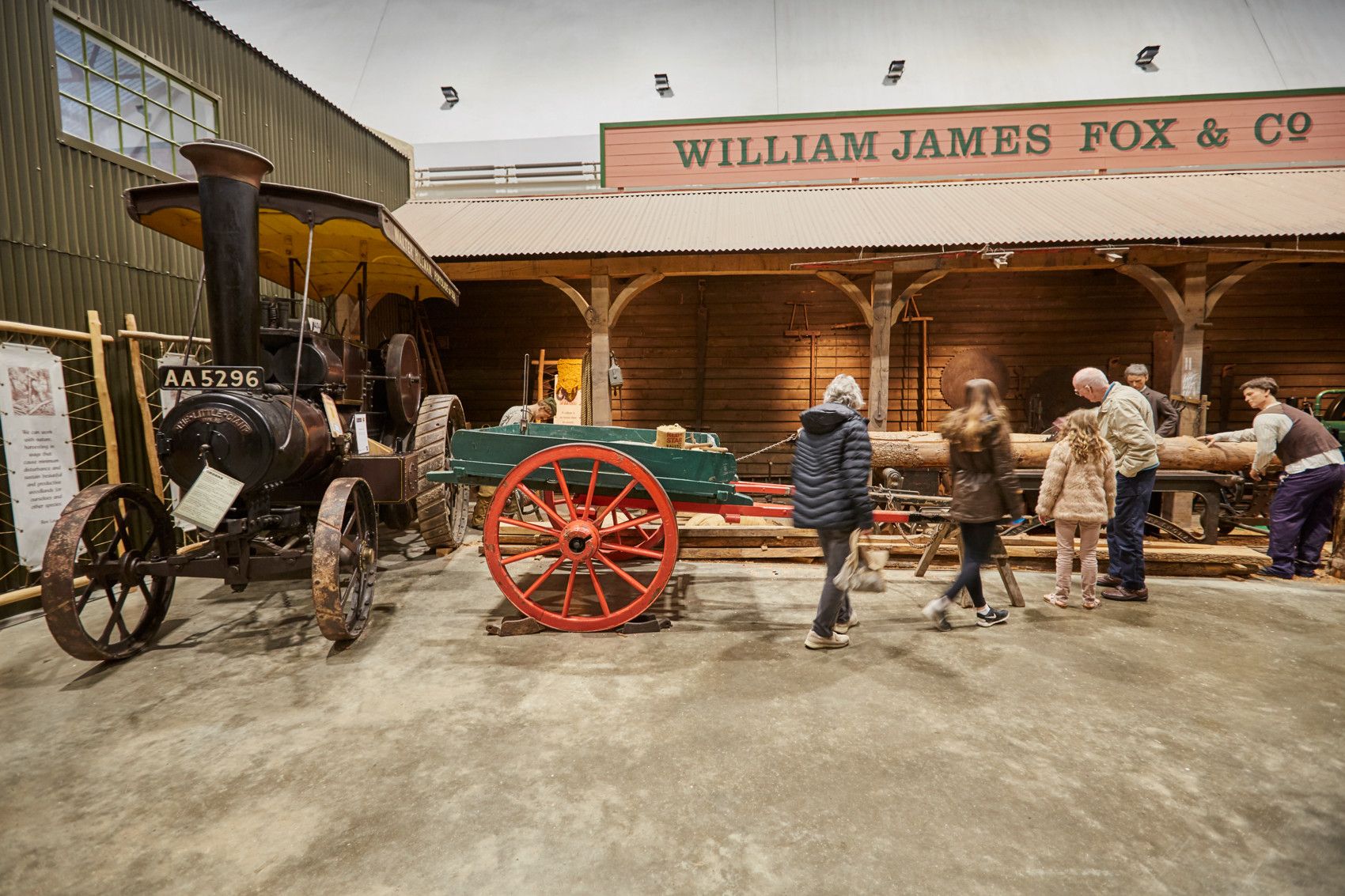
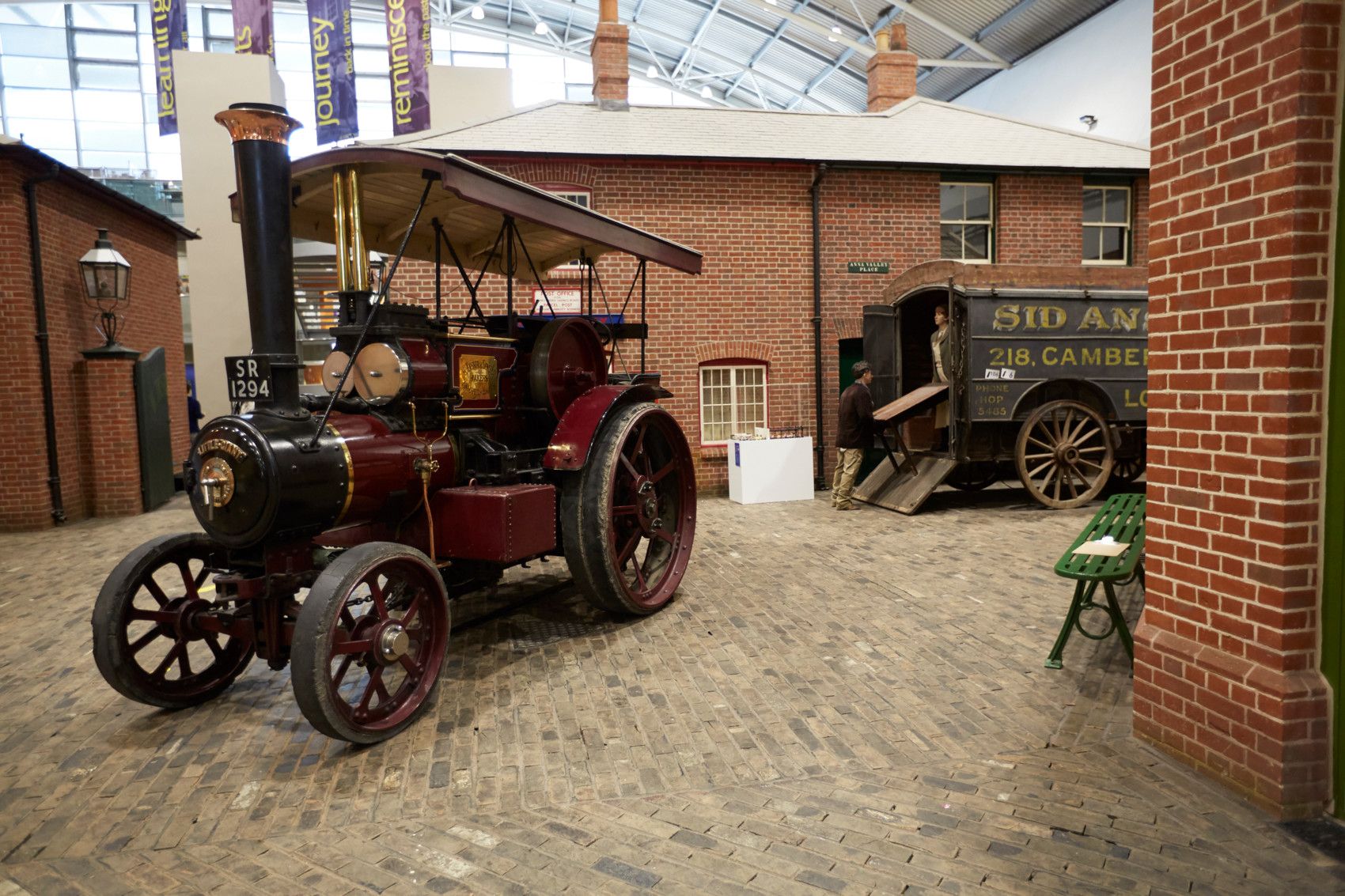
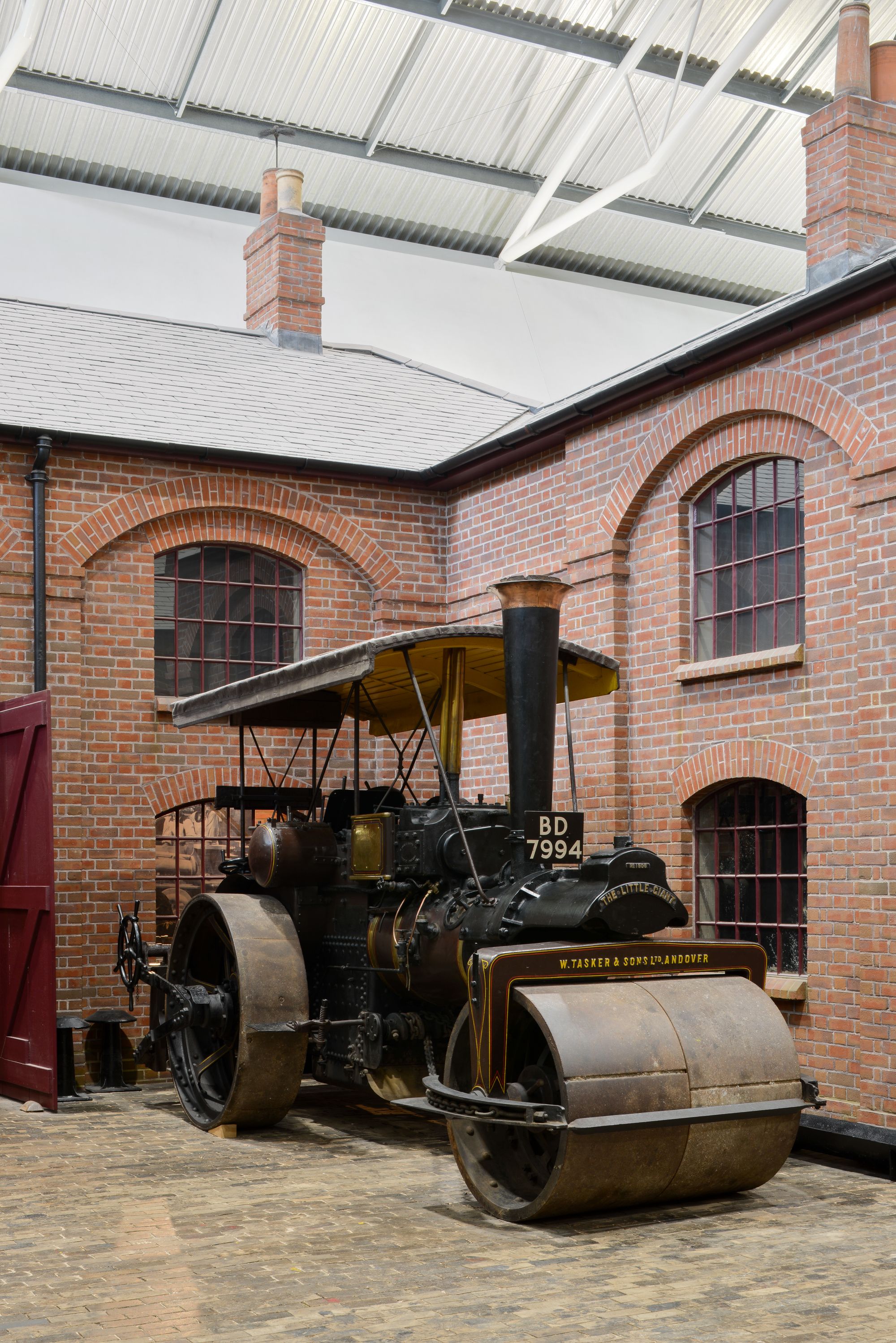
For 170 years, Taskers were a leading manufacturer of a wide range of agricultural implements and machinery, steam and stationary engines and road vehicles. The story began near Andover, in the early years of the 19th century, when Robert Tasker and his brother, William, began what was to become the Waterloo Ironworks.
In 1902 Taskers stepped in with the first of a standard class of 'light' (just under 3 tons) engine called the Little Giant. Eventually over 300 of these were built, and when enthusiasts today hear the name Taskers, it's the Little Giant they think of.
Many of Taskers vehicles are on display at Milestones Museum as part of the large engine collection cared for by Hampshire Cultural Trust, which includes vehicles from Thornycroft and Wallis and Steevens.
Sparsholt Roman flower mosaic
Where: Winchester City Museum
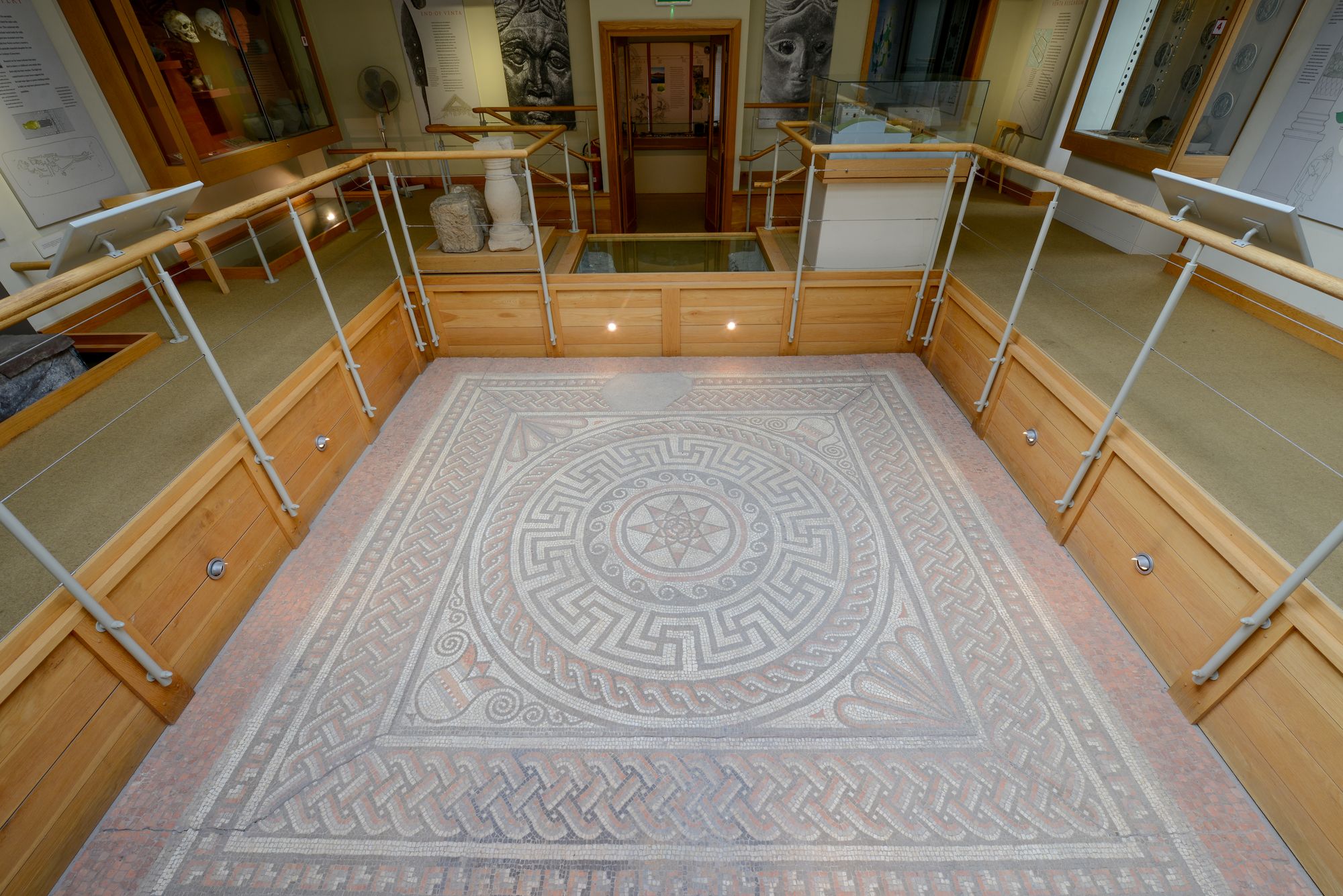
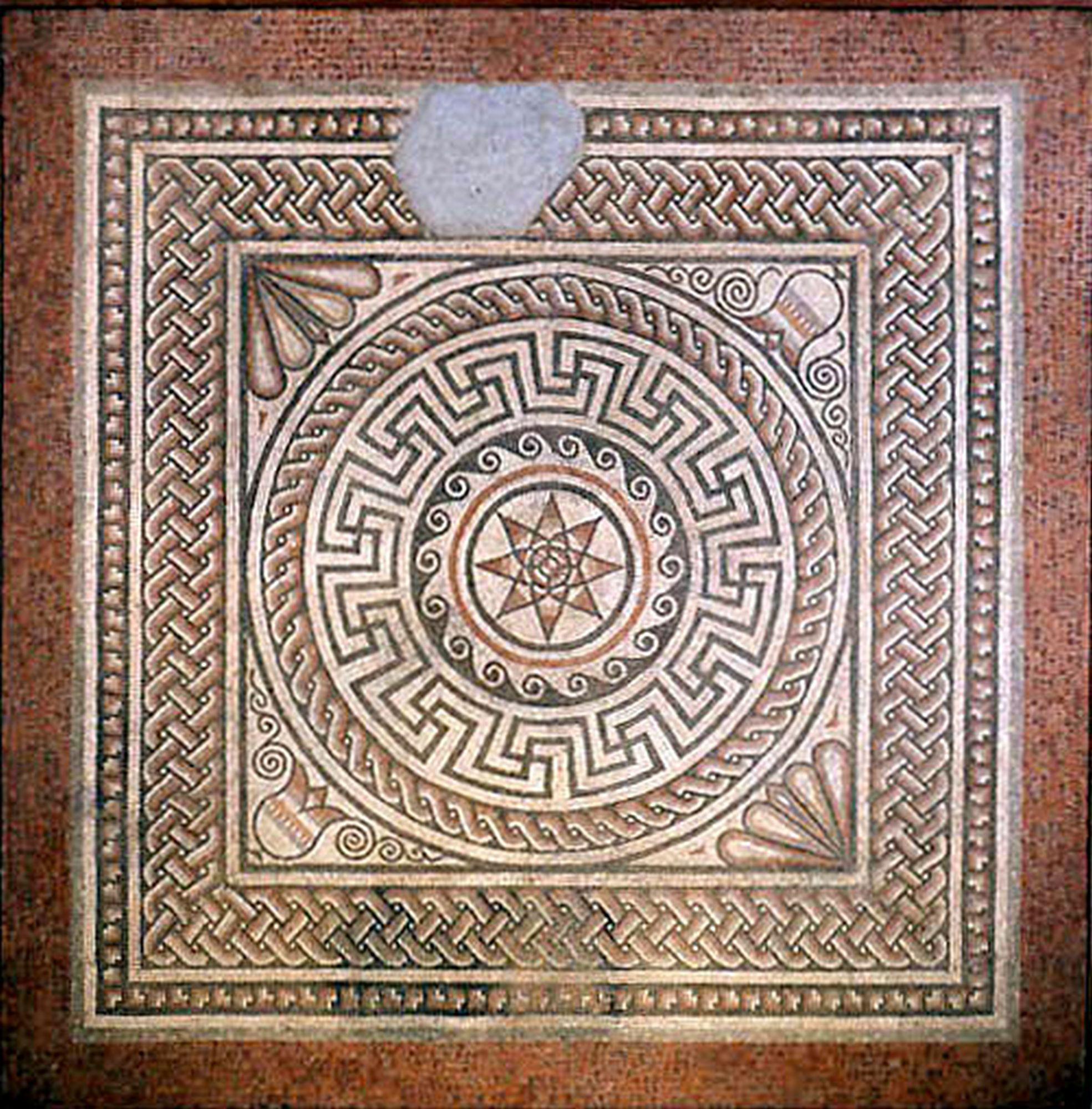
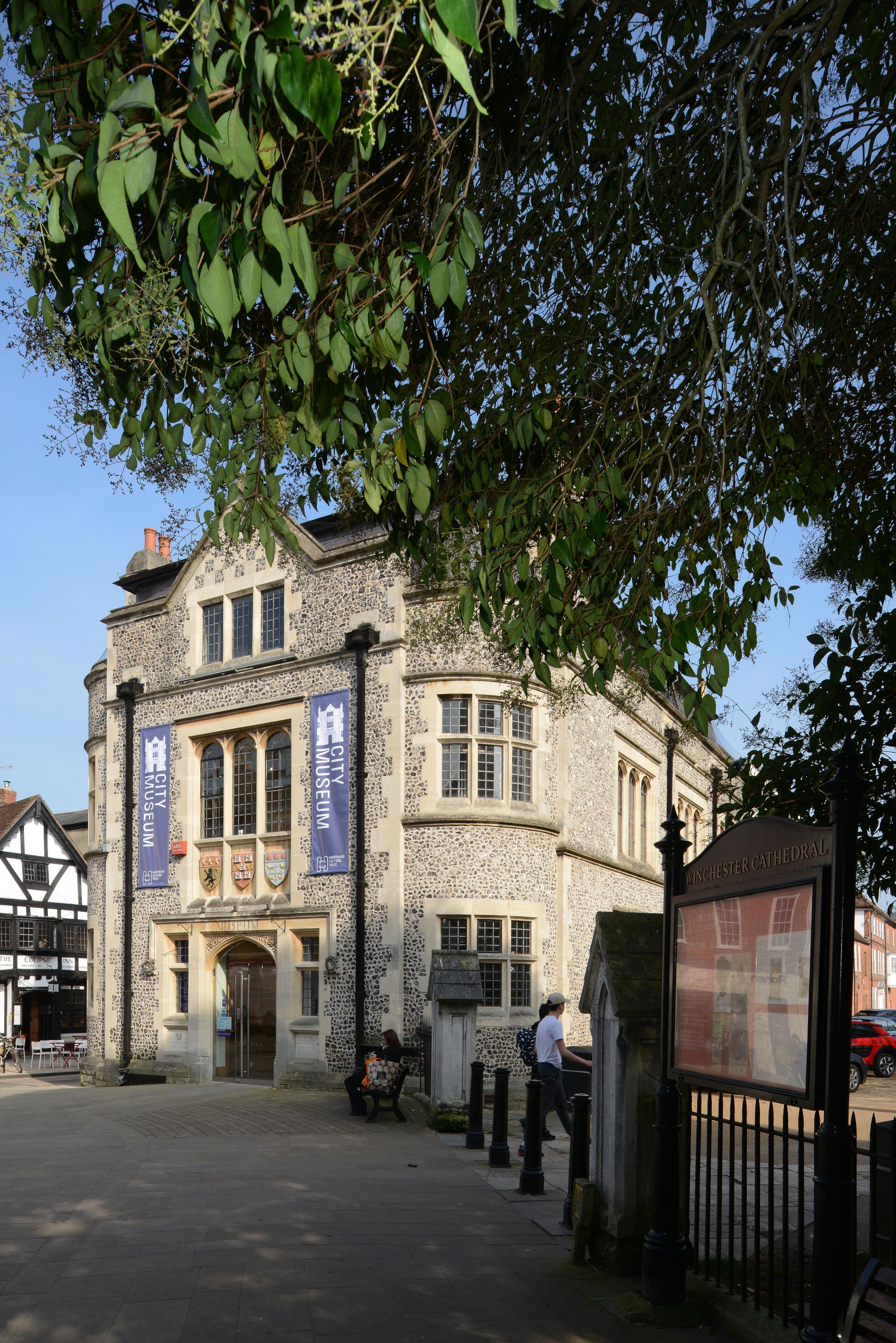
The mosaic was found during archaeological excavations on the site of Sparsholt Roman Villa, West Wood, Sparsholt, Hampshire between 1965-1972 by D E Johnston. It dates back to 4th century AD.
The mosaic occupied the principal room of the residential corridor-building at the villa. The mosaic design is decorative, but may also have had a religious or symbolic meaning for the owner. In Romano-Celtic religion, the central eight-petalled flower or star could represent life, and is here surrounded by a ring of waves, while the meandering swastika or peltae design could represent the heavens. The outer flower-like cups and scallop shells may represent the elements of earth and water. Also to be seen in the mosaic are two-strand and four-strand guilloche or plait designs. Surrounding the mosaic is a finely worked band of right-angled Z-pattern and a coarse plain red-brick border.
The mosaic was lifted in May 1969 for conservation and has been on display in Winchester City Museum since 1970.
Westival Shirt
Where: West End Centre, 48 Queens Road, Aldershot, GU11 3JD or yours here.

With the legend of Westival, comes a piece of legendary attire: the famous Westival T-shirt. This year's t-shirt is the final object on our list of Hampshire Favourites. It's a contemporary classic and a reminder of how for well over 10 years Westival has been a distillation of everything that makes the West End Centre award-winning, unique... and a bit silly.
Click here to learn about St Swithun, the patron saint of Hampshire.
If you have enjoyed Culture on Call and you are able to make a donation, any support you can give will help us keep people connected.

